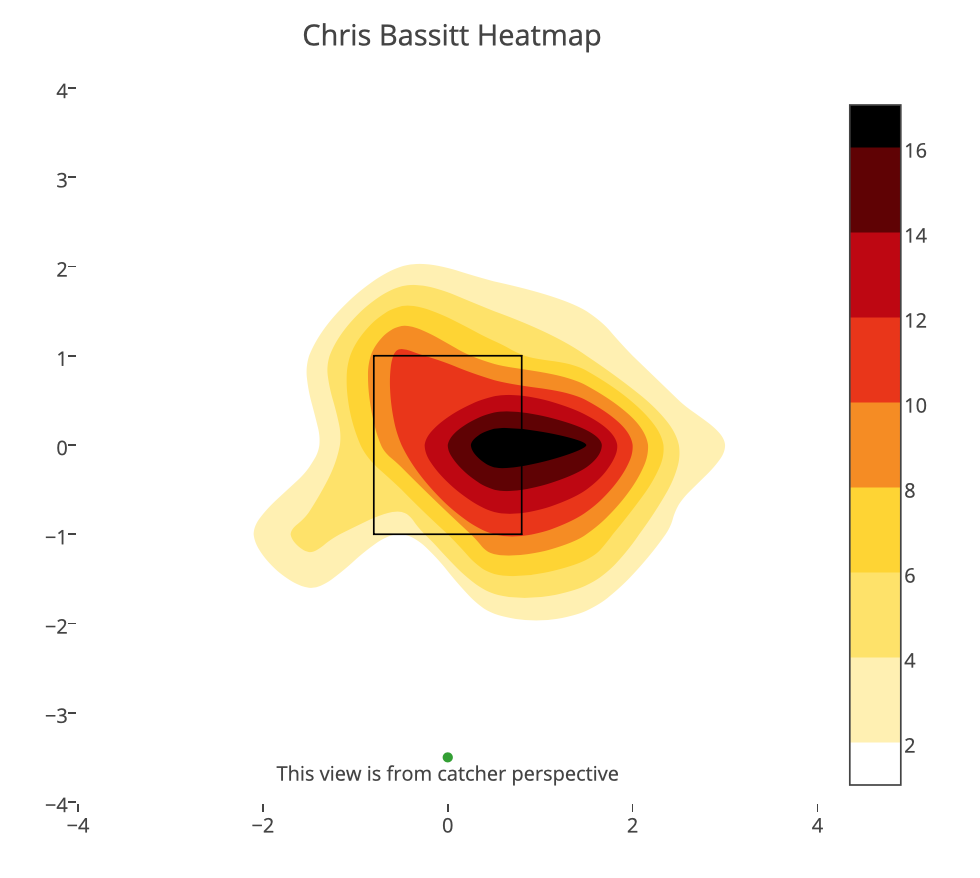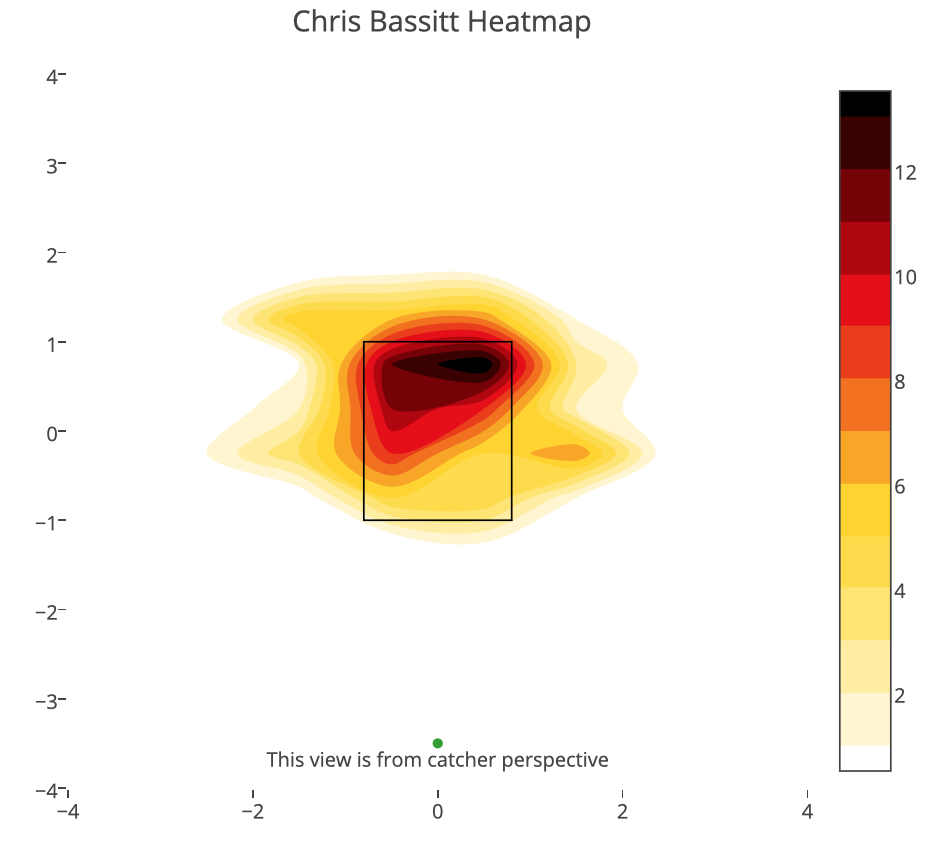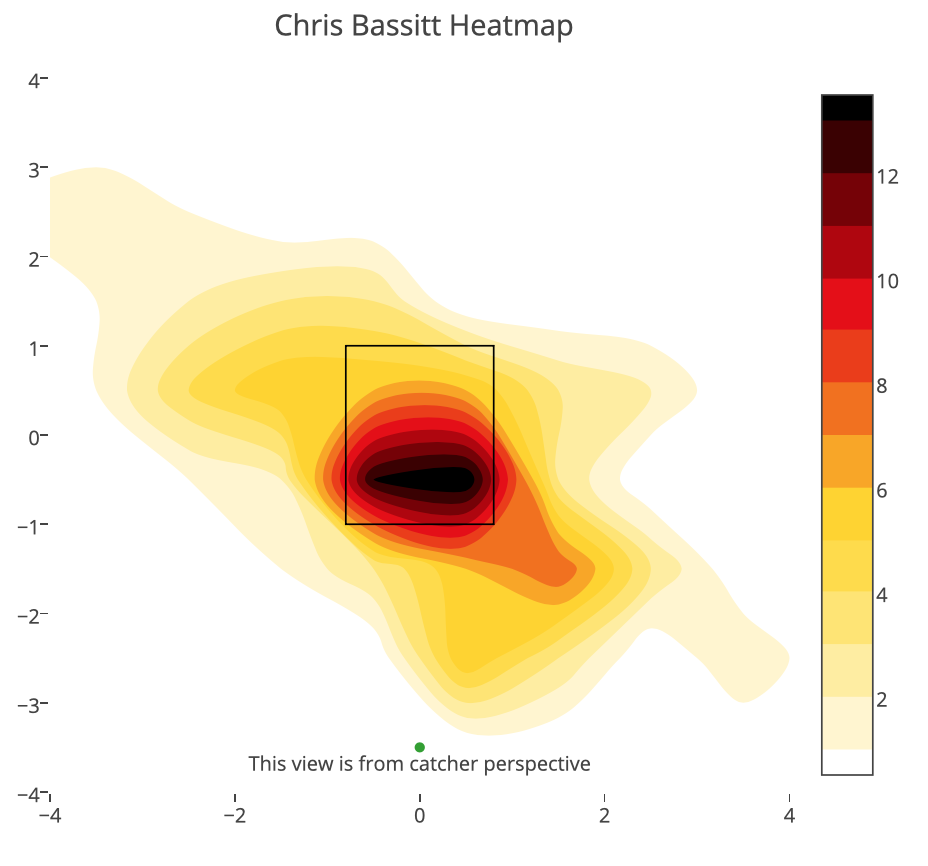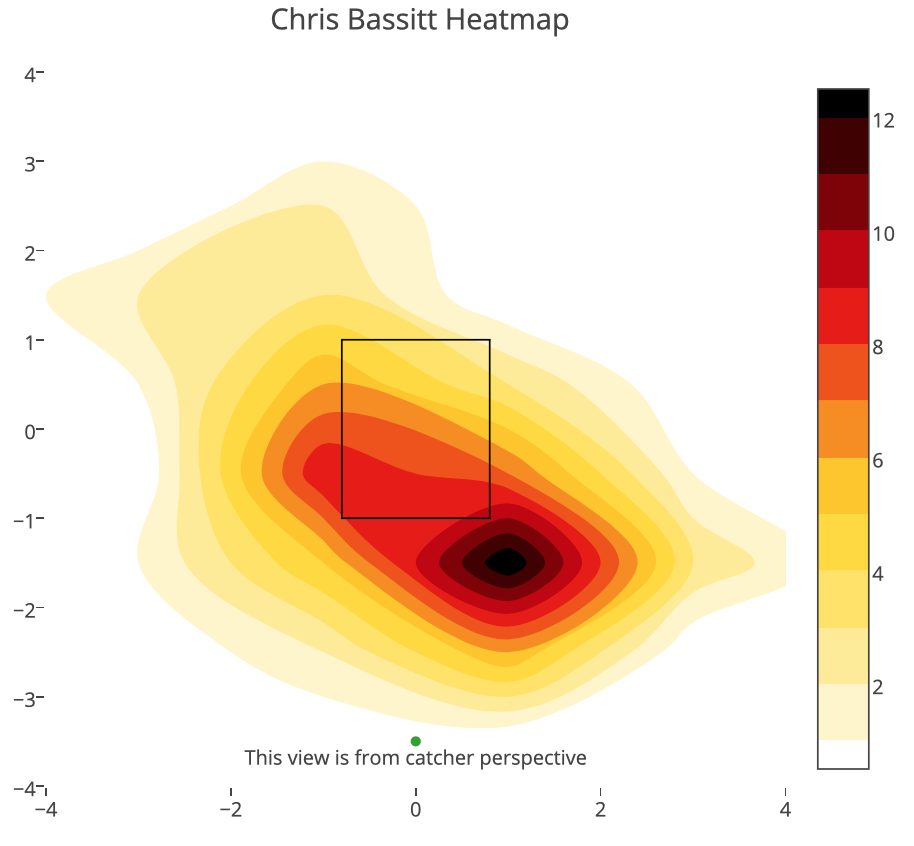The Athletics had an amazing run last year all the way to the playoffs despite the less-than-stellar starting rotation. Sean Manaea was having a breakout season before a shoulder injury cost him all of September and is not expected to be back until after the All-Star game this year. Trevor Cahill and Edwin Jackson pitched meaningful innings, but left the team in the offseason. They finished the 2018 season 20th in starter WAR.
Coming into the year, I thought the A’s were going to have one of the league’s worst rotations. How could a team whose biggest pitching acquisition of Marco Estrada in the off-season expect to compete in the American League West? Well, they have the 15th best starting rotation by fWAR, mainly due to breakout seasons from Frankie Montas and Chris Bassitt. Montas previously had some prospect pedigree but who is Chris Bassitt? Bassitt was drafted in the 16th round by the Chicago White Sox. The A’s acquired him, along with Marcus Semien and Josh Phegley, in exchange for Jeff Samardzija in the winter of 2014. A couple starts into the 2016 season, Bassitt had to have Tommy John surgery, which would cost him the rest of 2016 and most of 2017. It was not until June of last year until Bassitt pitched in the major leagues. So far in 2019, Bassitt is having an excellent season, sporting a 1.93 ERA and 0.98 WHIP with an 11 SwStr%. How can someone with not overpowering stuff be succeeding?
He is getting the right type of contact
Bassitt’s average exit velocity is 85.1, which is tied for sixth place in all of baseball. His sinker gets grounders 44.8% of the time, his cutter 53.8% of the time, his curveball 57.1% and his changeup 66.7% of the time. The league average is 42.9% for ground balls. This is good news for Bassitt because typically, ground balls do not go for an extra-base hits. It also helps when you have Matt Chapman, Marcus Semien and Matt Olson, who are all pretty good defenders. When he does allow a ball into the air, he does not get hit hard. The 22 of these line drives or fly balls have an average exit velocity of 88.9 MPH, which puts him around other pitchers like Stephen Strasburg, Gerrit Cole and teammate Frankie Montas. Those 22 batted balls are also only 4.5% of all of his contact. Keep in mind the league is hitting .335 on balls hit between 20 and 50 degrees, so Bassitt is limiting getting hit and when he does, he is limiting the hard contact.
Throwing more Four-Seam Fastballs
Bassitt is throwing his four-seam fastball 25% of the time, which is up from 13% last year. Batters have been unable to solve the 93 MPH pitch, only hitting .103/.188/.207. The pitch is also generating more swinging strikes as well. Last year, Bassitt was generating an 8.9 SwStr% and it is now up to 12.5 SwStr%. He seems to be pretty confident in using it as an attack pitch, throwing it in the zone 58.3% of the time, which is up from just 38.7% last year. He is also attacking the top of the strike zone with the four-seam instead of the glove side.
The pitch is also mowing down LHB—it has a 62.5 K% with a .071 AVG! Take a look at the difference in pitch location from last year to this year. It is also generating a fair amount of fly balls, but with an average exit velocity of 86.7 MPH, more poor contact. League average exit velocity on a fly ball is 92.3 MPH.
The curveball is as good as ever
Bassitt’s curveball is generating an average exit velocity of 74.5 MPH with an average launch angle of 11 degrees. The league average on the curveball is 90.8 MPH with a 35.6 average launch angle. So basically, Bassitt is able to get weak grounders with this pitch. The lower exit velocity on the curve is nothing new. Bassitt’s curve had an average exit velocity of 81.2 MPH, so seeing him reduce exit velocity is very encouraging. This could be attributed to the improved location in the pitch. Take a look at how Bassitt is attacking righties with the curve.
Instead of throwing it thigh high, he is throwing it down and away. Righties are batting .000 with a 40.0 K% and an average launch angle of 22 degrees.
Getting into good counts
Bassitt, other than inducing weak contact, is also getting into great counts. His first-pitch-strike percentage is at a career high, 63%. He is also staying ahead of batters. His two-strike percentage, which Nick Gerli talked about here, is 26.5%, which puts him around the likes of Stephen Strasburg and Luke Weaver and ahead of league average, 24.3%. Since the two-strike percentage is a more stable metric than SwStk% at determining a pitcher’s true skill, Bassitt’s improvement from last year to this year is more believable. Also of note, his average CSW Rate is 31%, which makes him the 27th best starter in all of baseball this year. Bassitt is in between Trevor Bauer, with 31.2% and Aaron Nola, with 30.9%, which is pretty good company to be around.
Featured Image by Justin Paradis (@freshmeatcomm on Twitter).





Great work Shelly! You gotta love those heatmaps following the Blake Snell Blueprint. Makes me sad that I didn’t pick him up when I had the chance, but such is life. Thanks so much for your work!
Thanks so much for reading Kyle! This Deep Dive was fun to do.
first desclafani, now bassit. the jinx is strong